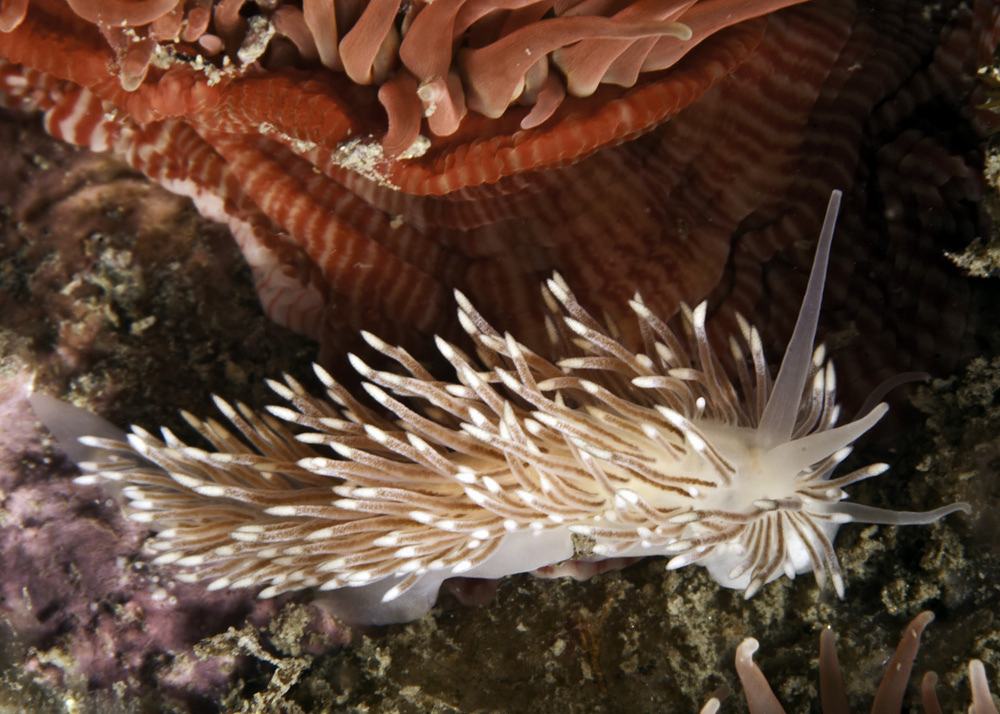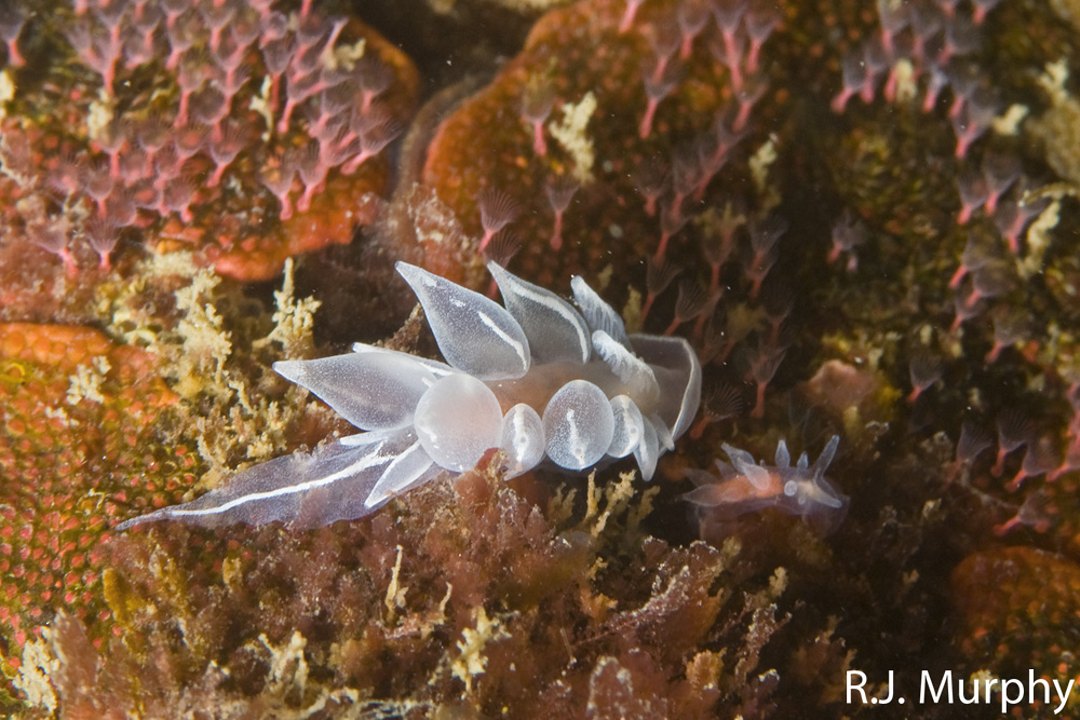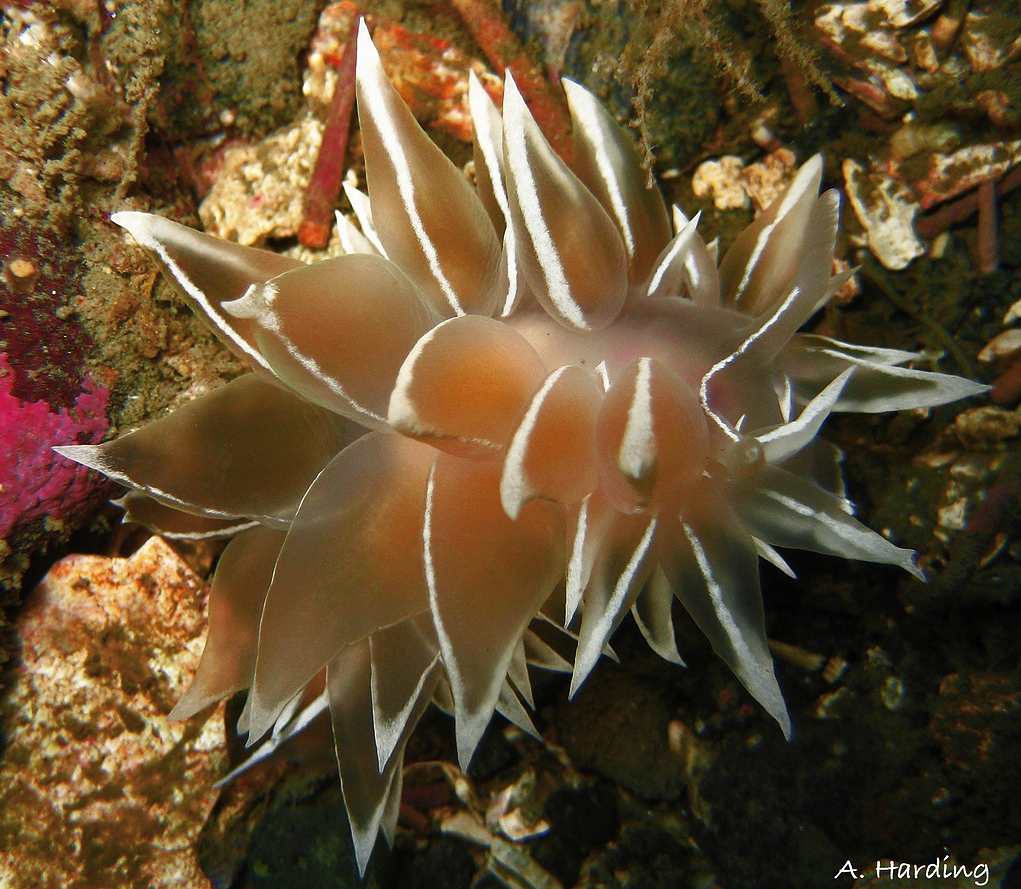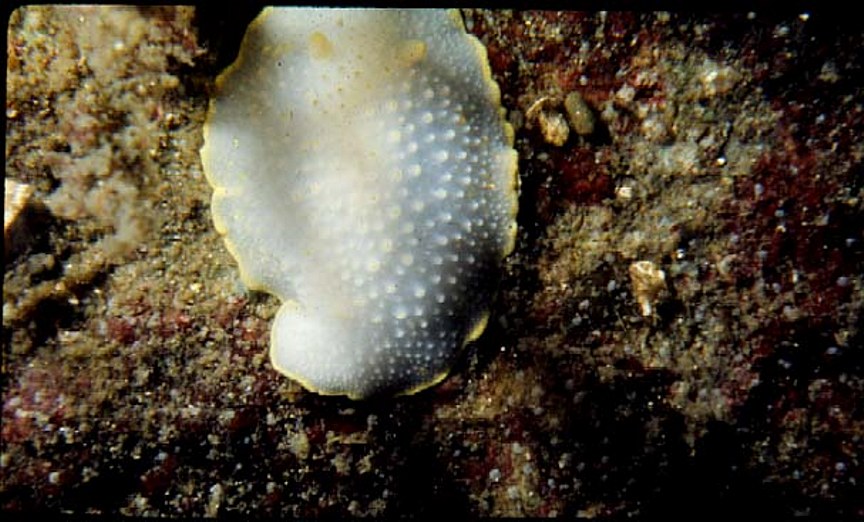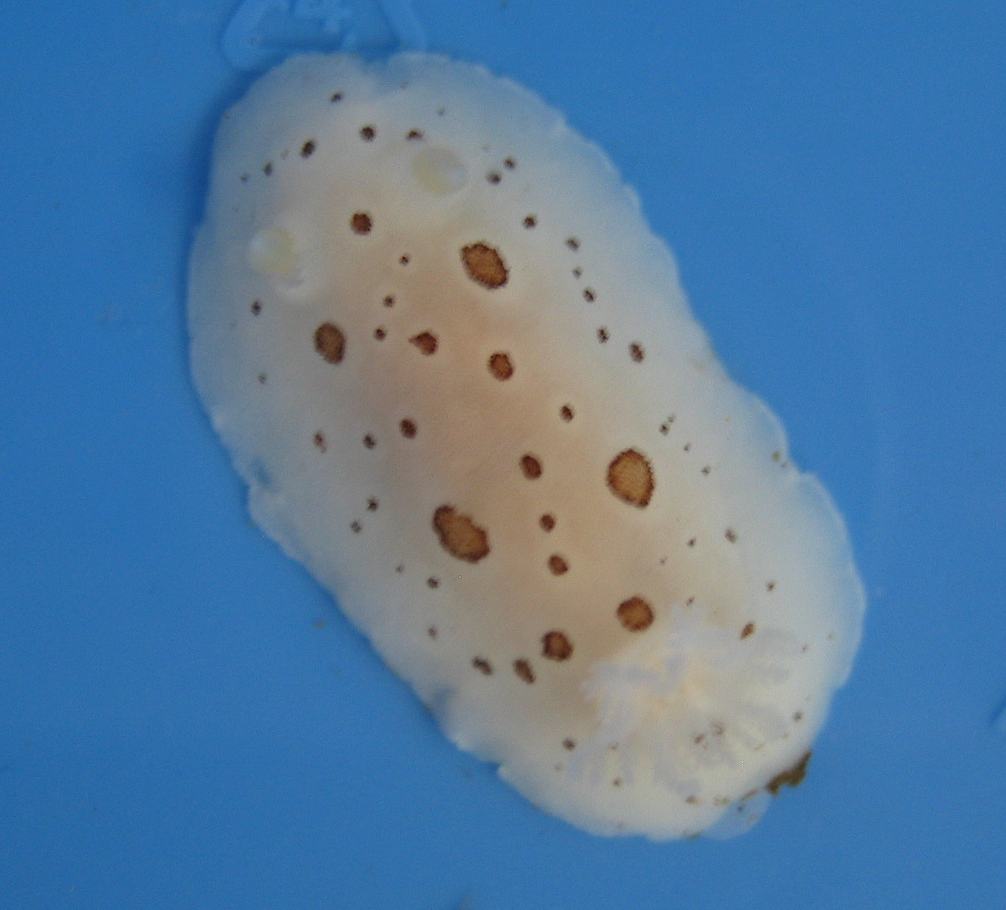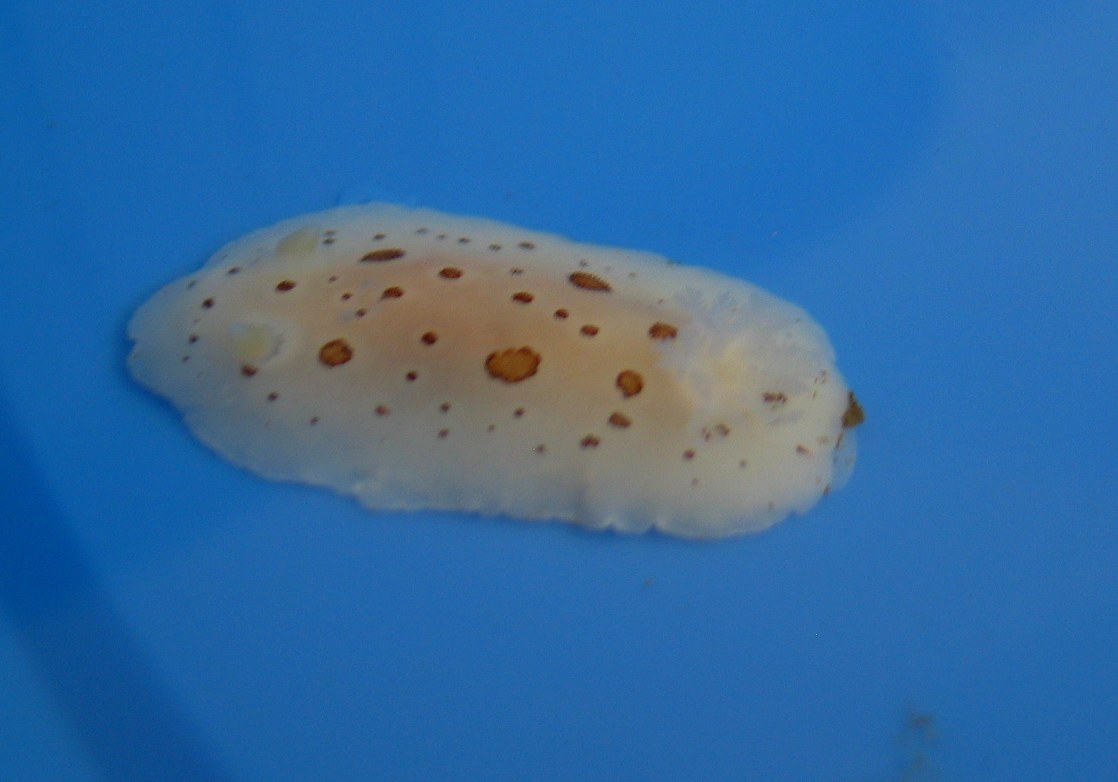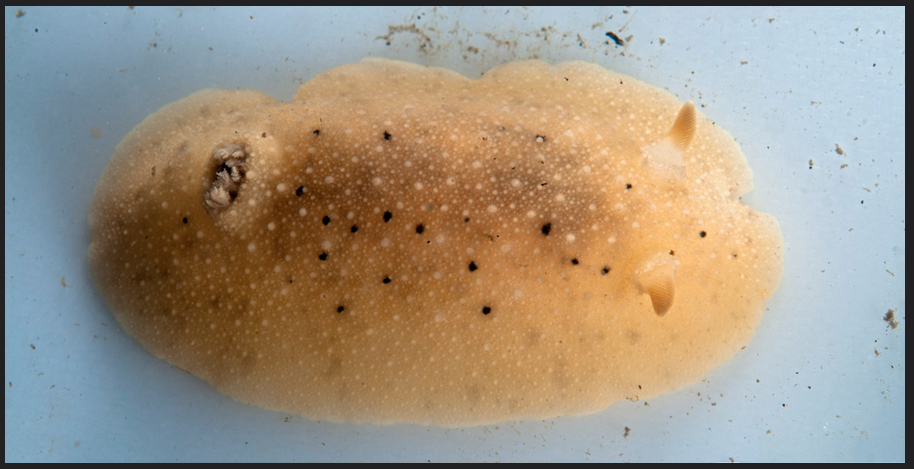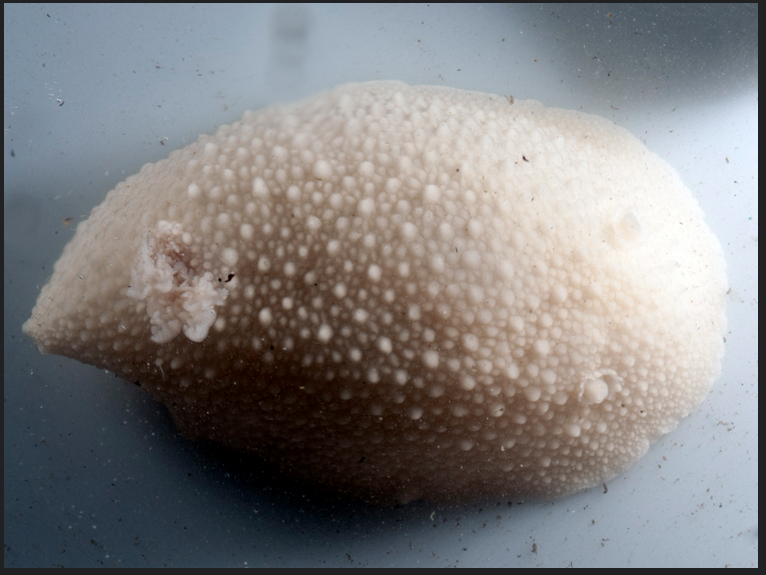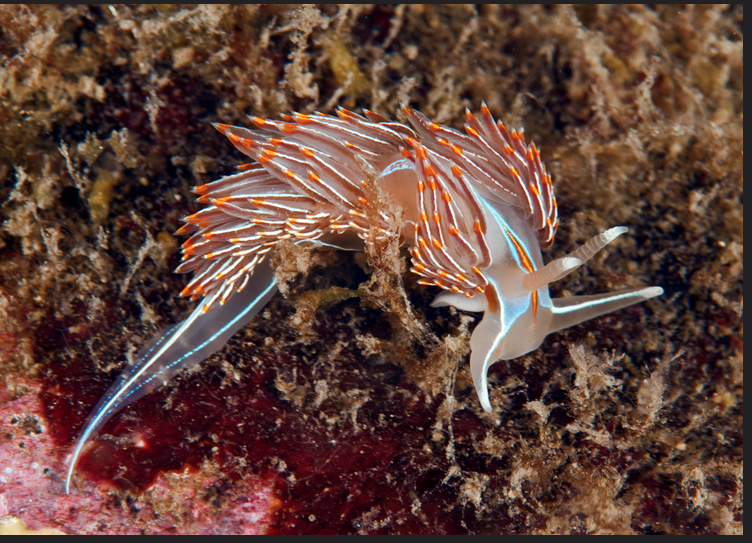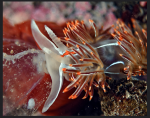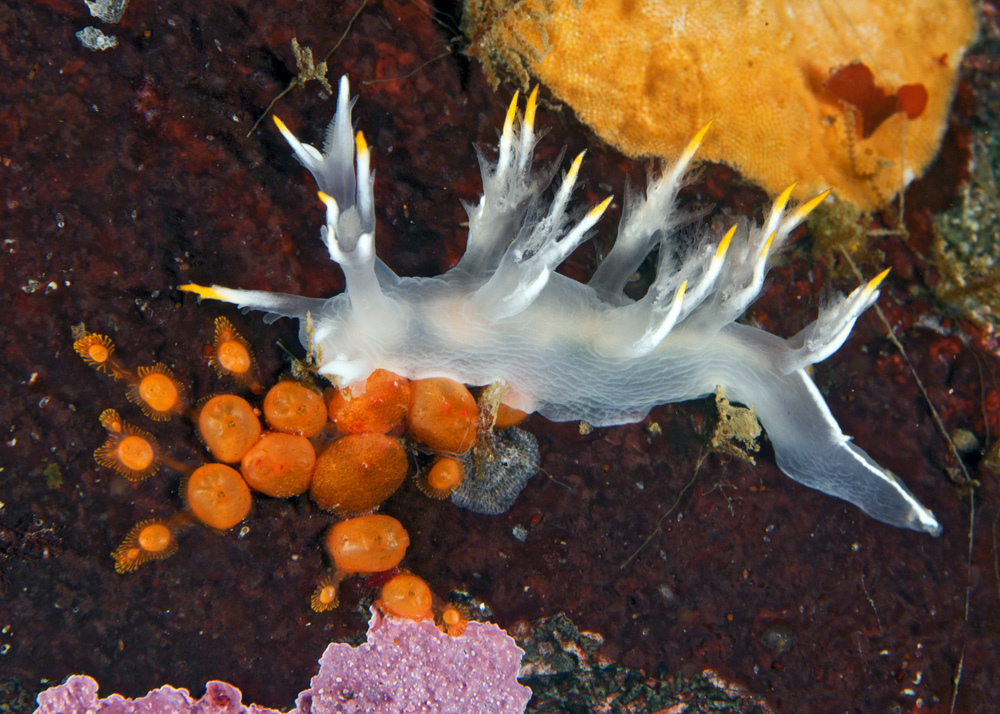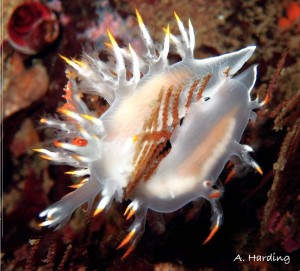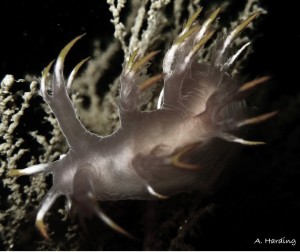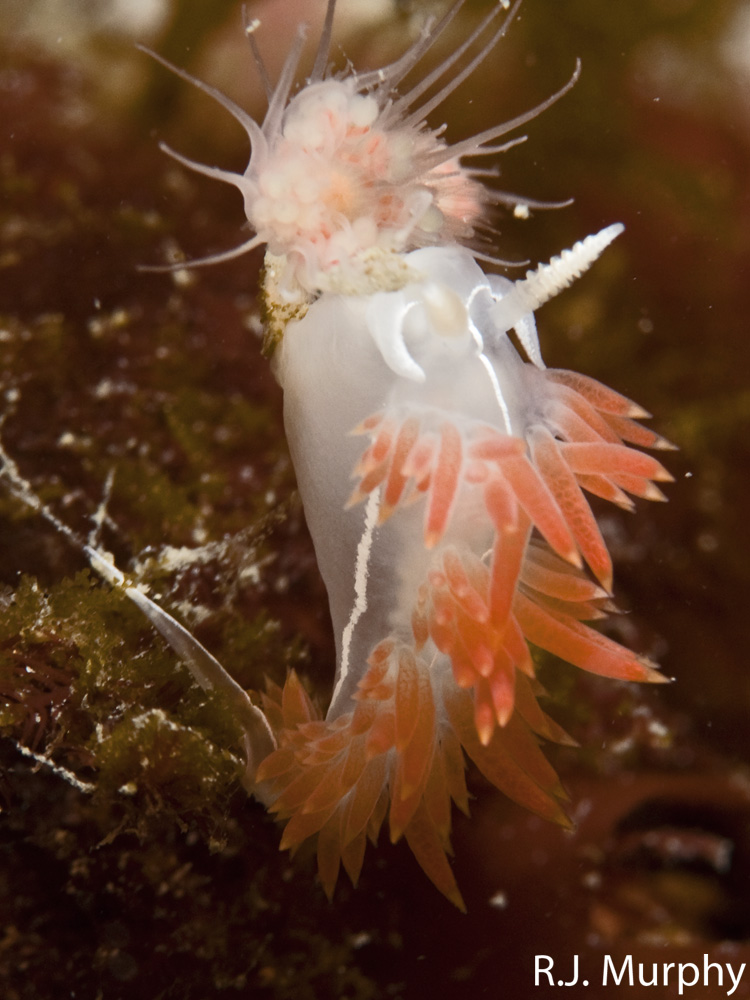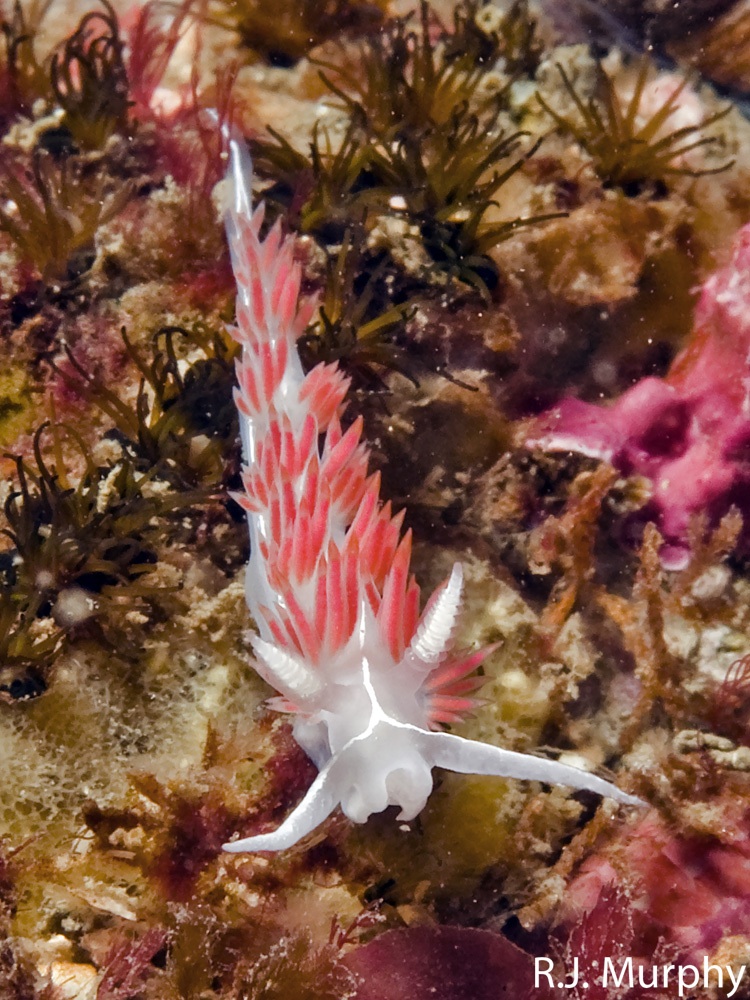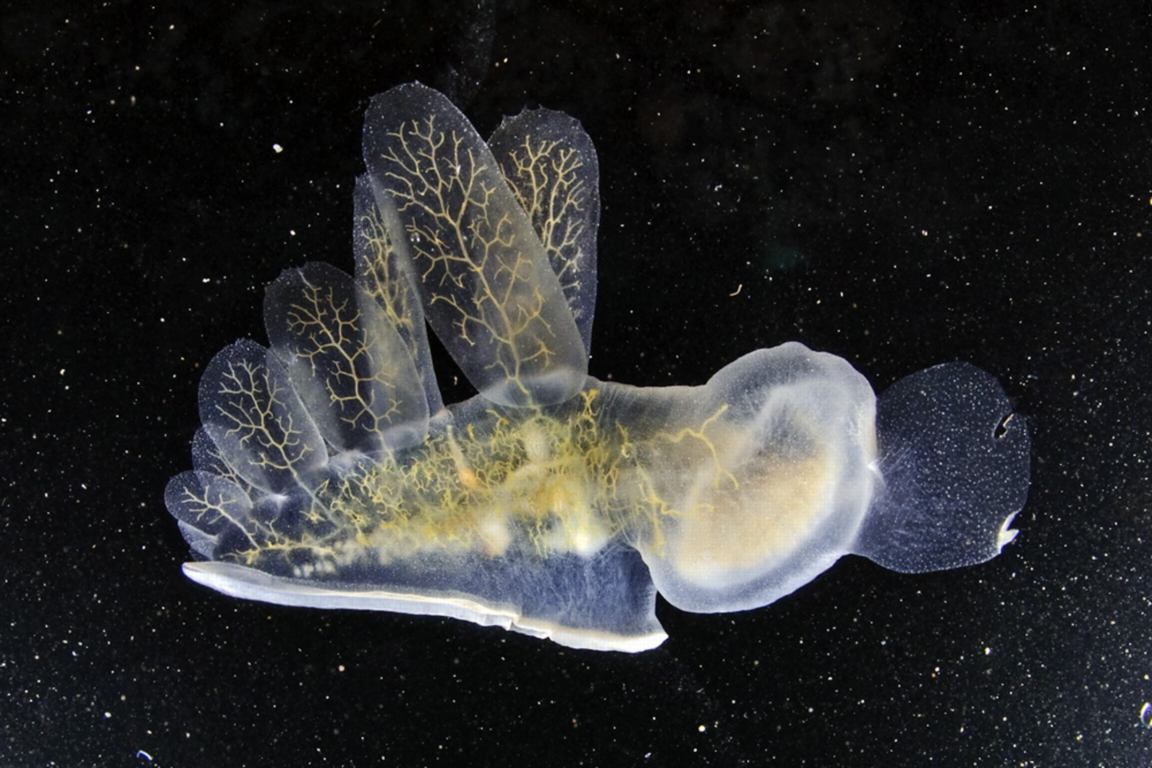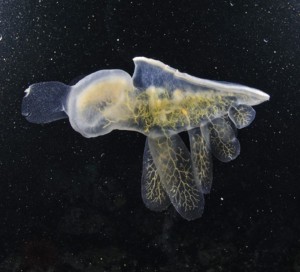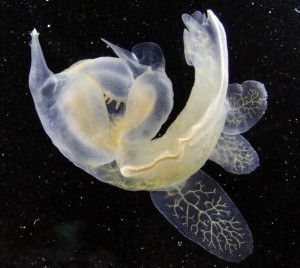From Marine Life of the Pacific by Lamb and Hanby, we see that the rose-pink cuthona, or Correa’s aeolid Is a very bushy species,( living fro intertidal to 20 metres depth from BC to California. The first three rows of cerata (gills) begin ahead of its rhinophores (sensory organs).It feeds on hydractinid hydroids whose color it closely matches. Macro image by Ryan Murphy
| Domain | Eukarya |
| Kingdom | Animalia |
| Phylum | Mollusca |
| Class | Gastropoda |
| Order | Nudibranchia |
| Family | Tergipedidae |
| Genus | Cuthona |
| Species | divae |
| Common Name: | Rose-pink Cuthona (Er.Marcus,1961 |
| Other Members of the Phylum Arthropoda at Race Rocks |
and Image File |
 The Race Rocks taxonomy is a collaborative venture originally started with the Biology and Environmental Systems students of Lester Pearson College UWC. It now also has contributions added by Faculty, Staff, Volunteers and Observers on the remote control webcams. The Race Rocks taxonomy is a collaborative venture originally started with the Biology and Environmental Systems students of Lester Pearson College UWC. It now also has contributions added by Faculty, Staff, Volunteers and Observers on the remote control webcams.
January 2011 Garry Fletcher |

